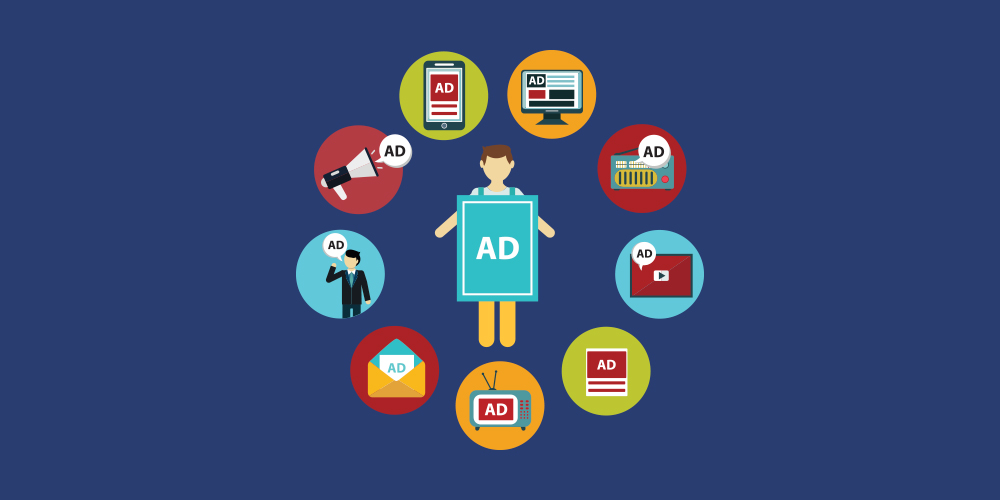Loading

‘Uncertainty’ is undoubtedly the current buzzword. But for the unprecedented and tragic circumstances of COVID-19 under which this buzzword originated, it would be a term that advertisers would normally attach and leverage in hashtags on social media and the other advertising media.
The coronavirus pandemic has caused a considerable drop in advertising spending. Ad spends are down 9% on average, with Germany and France falling by 7% and 12% respectively. Three of these years quarters are expected to have a greater impact that the financial crisis in 2008.
There’s a rule of thumb in the advertising industry that ad spend follows any rise or fall in GDP. Over the last decade, as global GDP has risen 3-6% each year, the ad market has grown with it to around USD 646 billion in 2019. Pre-coronavirus, the ad market was forecast to grow to USD 865 billion by 2024.
Coronavirus has forced a rethink – the pandemic has led to an immediate drop in advertising spending. First quarter data showed that year-on-year revenue in China was down 15%. Countries saw an average reduction of 9%; Germany and France fell 7% and 12% respectively.
The remainder of 2020 looks set to be challenging. According to the Interactive Advertising Bureau, almost a quarter (24%) of media buyers, planners, and brands have paused spending until the end of Q2, while 46% indicated they would adjust their ad spend across the same period. Three quarters expect the pandemic to have a bigger impact than the 2008 financial crisis.
However, there is a deviation to the principle that companies cut advertising budgets during a recession. In many countries, governments have emerged as advertising buyers to promote public health messages or support journalism.
COVID-19 is changing consumer behavior – and therefore advertising
Wherever consumer behavior has shifted, advertising spend has adjusted in response. It makes little sense for advertisers to spend on media that have no audience. As confinement measures were introduced around the world, out-of-home and cinema advertising shrank almost instantly; print advertising also fell.
Meanwhile, in-home media usage went up. TV viewership has climbed, but digital consumption has increased even more: the use of social platforms and streaming services has risen almost everywhere; gaming has also grown dramatically.
Advertisers have adapted by following consumers, which means prioritizing digital advertising. The online environment is favourable for “direct response” campaigns – those encouraging quick purchases by consumers – an attractive proposition for brands spending cautiously and looking to drive sales. In the first quarter, Facebook and Google saw better than anticipated first-quarter revenues.
Does this imply that digital-first markets are better positioned to withstand the effects of the pandemic? In China, where consumers spend almost two-thirds of their media time online, Tencent’s digital ad revenues in the first quarter increased by 32% year-on-year. As the country reopens, its ad market is predicted to grow by 8.4% – even after COVID-19 is accounted for, a figure still larger than the 8% ad growth forecast for the US pre-coronavirus.
Uncertainty about people’s spending and consumption patterns makes it hard to determine if China is a test case for the rest of the world. As Brian Wieser explains, One could argue that many elements of human behavior are going to change permanently. The products we want could be radically different in the future – so data that was used previously to inform advertising and marketing spend is not necessarily going to be useful.
Not all advertising is equal
Brands advertise to raise awareness, increase sales, and build loyalty, using media appropriate to each objective. In general, small- and medium-sized enterprises are more dependent on channels that drive customer engagement. Global brands, on the other hand, run multiple campaigns, including values-based marketing that builds an association with consumers’ identities.
Unilever, one of the world’s largest advertising buyers, is adapting on both fronts. According to Conny Braams, Chief Digital and Marketing Officer, Unilever is guided by three beliefs: brands with purpose grow, companies with a purpose last and people with purpose thrive. The pandemic will not waiver our commitment to the purpose-led business, nor will it change how we position our brands. More broadly, we are witnessing a change in consumer behavior. We know that life in the time of coronavirus is increasingly a life lived online which has led to an acceleration of digital adoption and e-commerce. Time spent with certain media channels has increased during the lockdown, so we are adapting to these changes, shifting to a greater focus on in-home channels versus out-of-home.
Long-term transformation
The pandemic is likely to shape the advertising industry in the long-term. Businesses are prioritizing survival for now, but in the future will have to find new ways of brand-building. The change in people’s media and consumption habits will force a rethink of how best to do so.
As Brian Wieser describes, Companies will find that there’s never been a better time to pitch ideas that involve real transformation. People will be more open minded and we’re going to see businesses find ways to push transformation even faster. For corporate decision-makers, this is going to be radically cheaper than it was a few months ago.
Finally, research shows that half the money brands spend with online publishers is lost in the programmatic advertising supply chain – and 15% is unattributed. This underlines problems with the media industry’s business model, where a ‘publisher’s paradox can see traffic increase, but not revenue. These challenges are exacerbated by the pandemic and suggest that greater transparency in the value chain is required.

Recent Comments